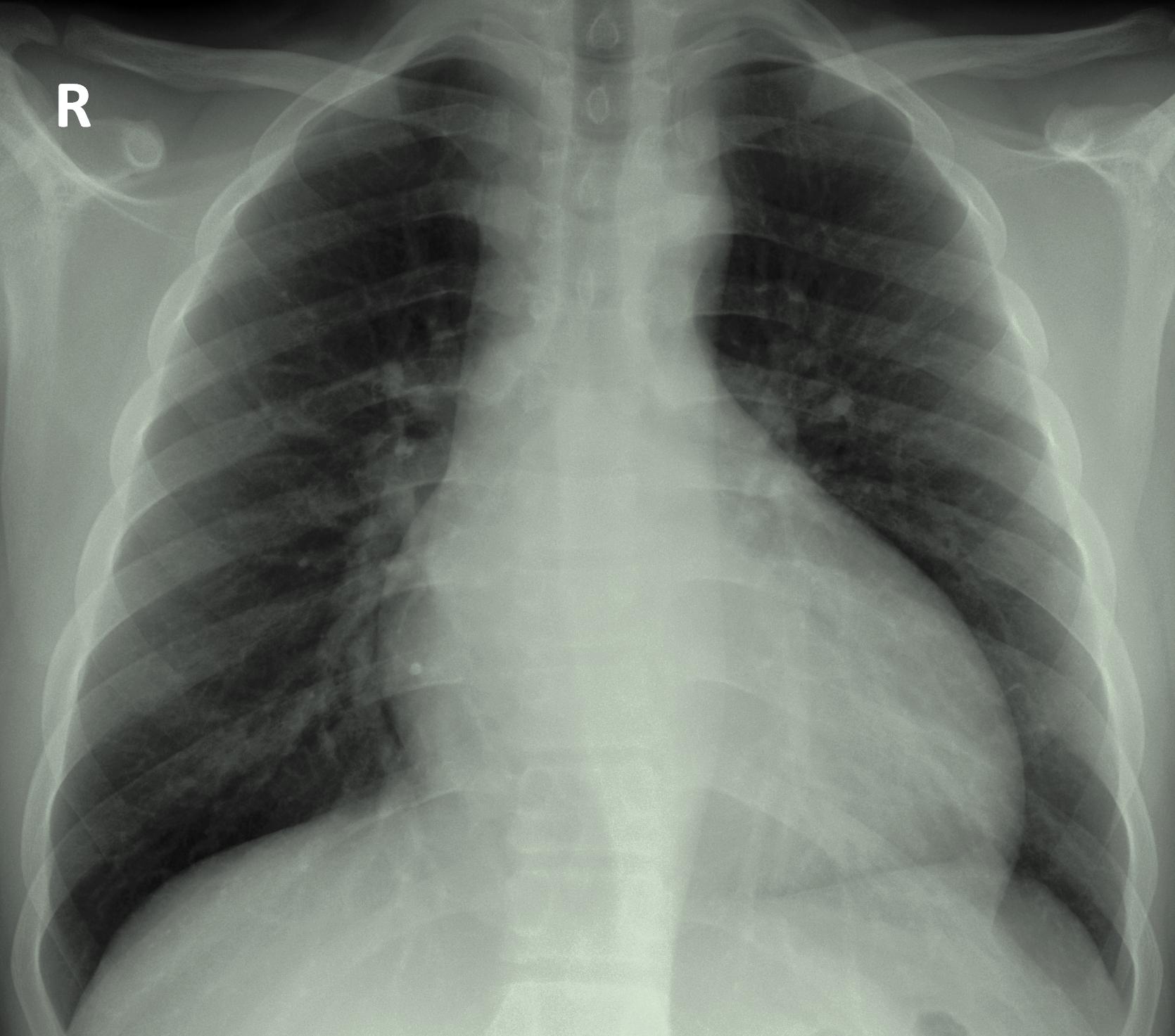Aortic regurgitation chest x-ray
| Resident Survival Guide |
|
Aortic Regurgitation Microchapters |
|
Diagnosis |
|---|
|
Treatment |
|
Acute Aortic regurgitation |
|
Chronic Aortic regurgitation |
|
Special Scenarios |
|
Case Studies |
|
Aortic regurgitation chest x-ray On the Web |
|
American Roentgen Ray Society Images of Aortic regurgitation chest x-ray |
|
Risk calculators and risk factors for Aortic regurgitation chest x-ray |
Editor-In-Chief: C. Michael Gibson, M.S., M.D. [1]; Associate Editor(s)-in-Chief: Cafer Zorkun, M.D., Ph.D. [2]; Varun Kumar, M.B.B.S.; Lakshmi Gopalakrishnan, M.B.B.S; Usama Talib, BSc, MD [3]
Overview
Chest X-ray findings associated with aortic regurgitation may include left ventricular enlargement, cardiomegaly, prominent aortic root with valvular calcification, prosthetic valve dislodgement, or aortic dilation. If aortic regurgitation is severe, signs of pulmonary edema may also be present.[1]
Chest X-Ray
In patients with aortic regurgitation, chest radiograph may demonstrate any of the following findings:[1][2][3]
- Cardiomegaly
- Aortic dilation
- Increased cardiac silhouette (suggestive of aortic dissection)
- Widened mediastinum (suggestive of aortic root dilation)
- Pulmonary congestion (suggestive of pulmonary edema or pulmonary hypertension in severe AR)
- Prominent aortic root
- Aortic valve calcification
- Prosthetic valve dislodgement
Shown below is a chest radiograph demonstrating left ventricular enlargement secondary to chronic aortic regurgitation as a result of increased left ventricular systolic pressure and volume overload.

References
- ↑ 1.0 1.1 Bonow RO, Carabello B, de Leon AC, Edmunds LH, Fedderly BJ, Freed MD; et al. (1998). "ACC/AHA Guidelines for the Management of Patients With Valvular Heart Disease. Executive Summary. A report of the American College of Cardiology/American Heart Association Task Force on Practice Guidelines (Committee on Management of Patients With Valvular Heart Disease)". J Heart Valve Dis. 7 (6): 672–707. PMID 9870202.
- ↑ McWilliams E, Zehr K, Alshehri A (2016). "An unusual shadow above the aortic valve". Heart. 102 (24): 1942. doi:10.1136/heartjnl-2016-309932. PMID 27515955.
- ↑ Kuan PX, Tan PW, Jobli AT, Norsila AR (2016). "Discrepancy in blood pressure between the left and right arms - importance of clinical diagnosis and role of radiological imaging". Med J Malaysia. 71 (4): 206–208. PMID 27770122.